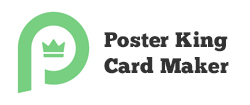The Lean Tech Stack Behind Successful Indie App Developers

Indie app developers often work solo or with small teams, making the tech stack crucial. You need tools that are powerful yet affordable, and simple enough to use without an IT team.
Whether you’re launching your first app or improving an existing one, the right tools matter. The goal is to stay competitive with larger companies while keeping your workflow lean. Choosing the right tools helps you save time and money.
This guide highlights five key areas where indie developers can optimize their tech stack. From coding to client communication, these tools are efficient, scalable, and budget-friendly.
Code Smarter With Lightweight Development Tools
Choosing the right tools can speed up development and reduce frustration. A flexible editor with useful extensions helps streamline app development. Quick launch and support for multiple languages make a big difference. Version control and team collaboration are essential even for smaller projects.
Built In notes that a version control system (VCS) helps track changes in a software project's codebase. It helps teams collaborate efficiently and manage different file versions.
Popular tools like GitHub streamline the process of maintaining clean code and fixing errors. VCS tools are essential for team-based development, ensuring all changes are documented and easy to review.
Cloud-based environments allow coding from anywhere without extra setup. Keeping your tools light avoids unnecessary delays during builds and updates. Focus on software that syncs easily and supports your workflow style. The right setup improves productivity and keeps your code in top shape.
Design and Prototype Without the Bloat
Design tools should be simple, powerful, and easy to navigate daily. Real-time collaboration helps work with remote teammates and freelancers. Web-based platforms keep files synced automatically and simplify access.
Some developers prefer desktop tools that integrate well with specific systems. Other platforms support user testing while keeping interfaces clean and intuitive. Templates and libraries are time-savers for repeat components and standard layouts.
Lightweight design tools allow you to focus more on user experience. A clean UI makes your app more appealing and easier to market. Smart design choices can set your app apart in a crowded market.
Business Tools That Keep You Looking Pro
Professionalism is just as essential as crafting a seamless app experience. Indie developers, even with small teams, need tools that keep them organized and efficient. These business tools enhance daily operations and boost your brand’s credibility.
Consider the following tools for smoother operations:
- Smooth and secure payment systems are crucial for scaling indie development.
- Messaging tools streamline communication, especially across multiple time zones.
- Virtual office services maintain a professional image for remote workers.
- Virtual mailboxes allow indie developers to receive physical mail without a fixed address.
Locations like New York, California, or even Texas are popular for setting up a business presence, but some developers choose a more strategic approach. Delaware, for example, has long been favored due to its business-friendly environment and favorable tax laws.
Tax Foundation mentions that Delaware’s 8.70% corporate income tax rate is competitive compared to other states. The state also benefits from no sales tax, which is appealing to many businesses. Delaware is a desirable option for many enterprises because of this mix.
According to The Farm Soho, a Delaware virtual office provides a business address without the need for a physical office in the state. It helps you build credibility with clients, investors, and partners. This setup also simplifies business registration and keeps your personal address private.
Additionally, with Delaware mail forwarding, developers can have their business correspondence sent to them digitally, ensuring that nothing is missed.
Overall, these services enhance your professionalism and help you present a polished image even as an indie app developer. They also allow you to focus on growth while keeping overhead low and operations flexible.
Analytics and User Feedback Tools on a Budget
You can learn more about how people engage with your app by using analytics tools. Free options exist that provide detailed tracking with minimal effort. Visual reports can show trends, retention rates, and feature popularity in real time.
Adobe Analytics highlights that behavioral insights, like drop-off points, reveal where users get confused or frustrated. Forms and surveys are great for collecting feedback directly from your audience. Some tools even allow real-time suggestions and bug reports from inside your app.
Lightweight analytics don’t drain your resources but still offer powerful insight. Understanding user behavior helps you improve your product with each release. A strong feedback loop leads to better apps and faster growth.
Testing Tools That Won’t Slow You Down
Testing needs to be efficient so you can launch updates on time. Simulated devices allow broad testing coverage without the need to buy every model. Cross-platform testing ensures your app looks right on all major devices.
Video games are a great example of applications that demand cross-platform testing during development. Global Growth Insights states that over 60% of games are now available on multiple platforms, increasing cross-platform testing demand. This demand for compatibility testing has surged by 35% in recent years.
Game studios focus on ensuring smooth performance across PCs, consoles, and mobile devices. Seamless gameplay across platforms is essential for meeting user expectations and expanding reach.
Specialized tools help detect bugs in specific conditions and environments. Simple frameworks work well for unit testing and are easy to integrate. Automated testing saves hours while still catching critical issues.
Early testing leads to better performance and more reliable user feedback. A fast process means more time for refining features and fixing flaws. Reliable testing ensures stability without needing a full QA department.
FAQs
What is the benefit of lightweight development tools?
Lightweight tools help reduce system resource consumption and improve overall performance. They provide essential features without unnecessary bloat, keeping the focus on the task at hand. This approach allows developers to build and iterate faster while maintaining simplicity and stability throughout the development process.
Why are clean UI design choices crucial?
A clean UI design enhances the app’s usability and aesthetic appeal, making it easier for users to navigate. It reduces clutter, focusing user attention on the core functions. Simple, intuitive interfaces help apps stand out in a crowded market and improve overall user satisfaction.
How can a professional brand image benefit an indie developer?
A professional brand image enhances credibility, making clients and partners more likely to trust your business. It helps differentiate your app in a competitive market, positioning your product as high-quality. Developing a polished, professional image also attracts better opportunities for funding, partnerships, and clients.
For indie app developers, selecting the right tools is crucial for growth and agility. Using lightweight development and design tools helps reduce overhead and focus on key areas. A tech stack that emphasizes efficiency in testing and analytics allows for quicker iteration.
These solutions enable indie developers to create strong applications while maintaining a professional presence. With the right business tools, developers can easily compete with larger companies. This thoughtful approach ensures they remain adaptable, drive user satisfaction, and continue to scale without unnecessary complexity.
About The Author
Related Blog
View All-
Featured Android & iOS Apps of November 2016 - TheGreatApps
Don't Miss The Best Apps November 2016 The list of Best Apps November 2016 is out. The many apps have been launched every day on Play Store and App Store. Some are stand out from them. So we give you here the best apps of last month. These are the ...
-
8 Mobile App Trends to watch out in 2017
8 mobile app trends 2017 curated from top mobile app, UI, UX experts across the web to bring you the best information. Enjoy! 1. IoT + Wearables Apps In 2016, IoT-enabled devices emerged for the first time. In 2017, more and more devices will become IoT-enabled. ...







